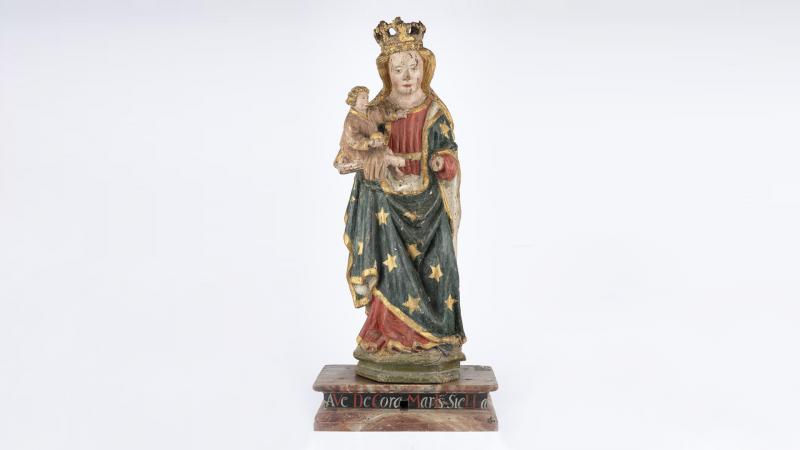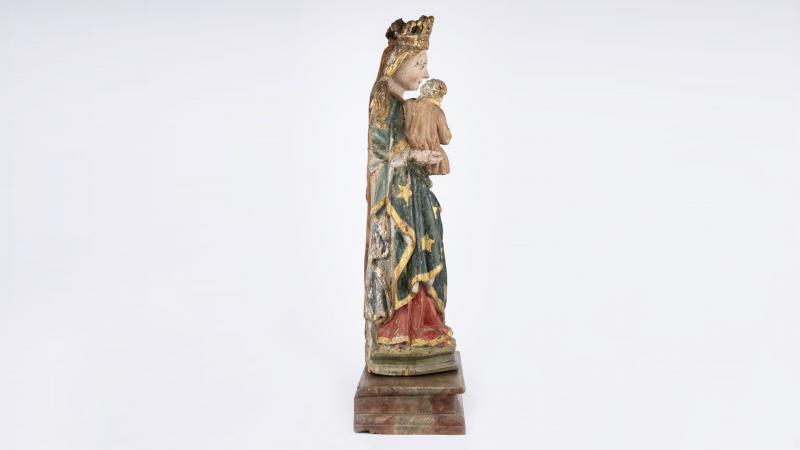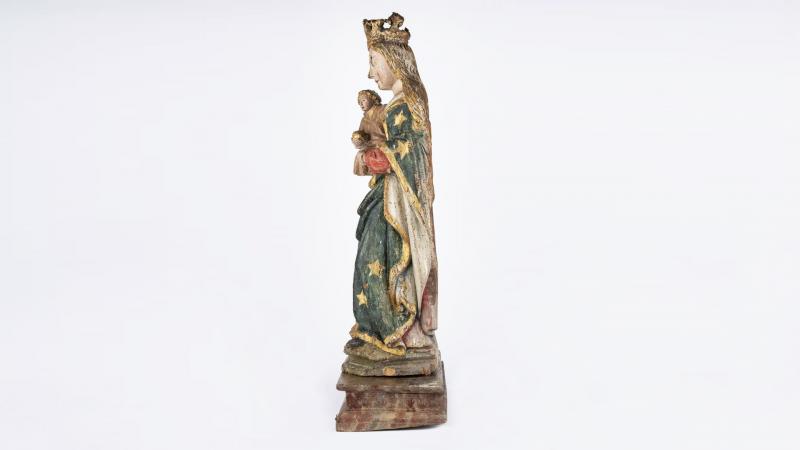In Liège, on 15 August, in Outremeuse, there is a popular festival that combines Marian devotion (procession of the statue of the black Madonna of the Church of St. Nicholas, potale) and secular celebrations: processions, balls, "boûkète" and "peket", etc.
The Virgin and Child presented here was acquired by the “amis du MARAM” association in 1982. It came from the Ponthoz castle chapel (Condroz), where it was hanging over a statue of Saint Hubert. The Virgin rests on a pedestal bearing the chronogram “aVe De-Cora MarIs steLLa” (1706). The work has certain characteristics that continue the pattern of the 14th-century Madonnas: the familiar attitude of the Child, whose hand is resting on the breast of his mother, or the draped apron of the Virgin's mantle. The face is clear, the forehead high, the chin pronounced, the hair retracted laterally in two waves that emerge from the crown to spread over the shoulders. The drape is made of voluminous V-shaped folds at the level of the legs and widely spread on the floor. The bodice is marked by vertical tubular folds, which are interrupted at the waist by a wide belt.
Here the Child is held in the right arm – an unusual feature. The more recent polychromy is precisely dated by the chronogram of 1706, which constitutes the invocation on the base: the golden stars that adorn the blue mantle evoke the "Stella Maris", the Star of the Sea, inspired by the Vespers of the Virgin.


